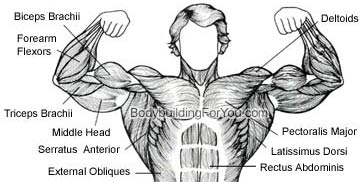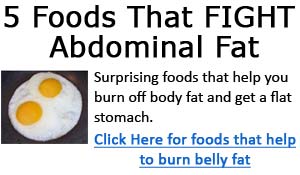Chest Muscle - Pectoral Muscle (Pecs)
Chest Muscle Anatomy & Function
The pectoral muscle covers your rib cage, connects to the collarbone, and connects to the breastbone and the cartilage of several ribs. Main function of the chest muscle is to bring the arms towards the chest, and medial rotation of the arm. Motions such as pushing, pitching a ball, swimming strokes, bench pressing, or even slamming a door shut involves the pectoral muscles.
There are 2 components to the chest muscle: pectoralis major and pectoralis minor muscles. The pectoralis major lies on top of your rib cage, and the pecs minor lies under the pectoralis major muscle. Your pecs attach near the shoulder joint, and originate on the breastbone in the center of your chest.
Chest Muscle Diagram

Pectoral Muscle (Pec Muscle) Development
The pectoral muscle (pecs) is probably one of the most noticeable body parts, and along with biceps, are often the two most popular muscle groups to train for beginners. After all, who doesn't want big guns and a massive chest? Of course, if you've been reading other articles on this site, you'd know bodybuilding involves more than just bench pressing and barbell curls. =)
I have to admit, when I first started lifting weights years ago, chest day was always my favorite day. Even now, working out the chest muscles is still one of my favorite days, along with all my other days! See my training routine here.
Thick, well defined pecs is one of the most important qualities in a bodybuilder's physique. Well developed pectoral muscles doesn't come easy, and requires dedication and hard work. There's no quick, easy way to develop impressive pecs, but patience and dedication will pay off in spades if you stick with it.

